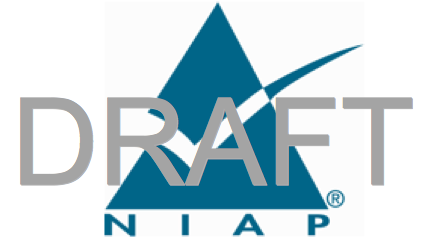| Common Criteria (CC) | Common Criteria for Information Technology Security
Evaluation. |
| Common Evaluation Methodology (CEM) | Common Evaluation Methodology for Information Technology Security
Evaluation. |
| Protection Profile (PP) | An implementation-independent set of security requirements for a category
of products. |
| Security Target (ST) | A set of implementation-dependent security requirements for a specific
product. |
| Target of Evaluation (TOE) |
The product under evaluation. In this case, the Operating System as described in section
and its
supporting documentation.
|
| TOE Security Functionality (TSF) | The security functionality of the product under evaluation. |
| TOE Summary Specification (TSS) | A description of how a TOE satisfies the SFRs in a ST. |
| Security Functional Requirement (SFR) | A requirement for security enforcement by the TOE.
|
| Security Assurance Requirement (SAR) | A requirement to assure the security of the TOE.
|
ADV_FSP.1 Basic Functional Specification (ADV_FSP.1)
Developer action
elements:
The developer shall provide a functional specification.
The developer shall provide a tracing from the functional specification to the
SFRs.
As indicated in the introduction to this section, the
functional specification is comprised of the information contained in the AGD_OPE and
AGD_PRE documentation. The developer may reference a website accessible to application
developers and the evaluator. The assurance activities in the functional requirements
point to evidence that should exist in the documentation and TSS
section; since these are directly associated with the SFRs, the tracing in element
ADV_FSP.1.2D is implicitly already done and no additional documentation is
necessary.
Content and presentation
elements:
The functional specification shall describe the purpose and method of use for
each SFR-enforcing and SFR-supporting TSFI.
The functional specification shall identify all parameters associated with each
SFR-enforcing and SFR-supporting TSFI.
The functional specification shall provide rationale for the implicit
categorization of interfaces as SFR-non-interfering.
The tracing shall demonstrate that the SFRs trace to
TSFIs
in the functional specification.
Evaluator action
elements:
The evaluator shall confirm that the information provided meets all requirements
for content and presentation of evidence.
The evaluator shall determine that the functional specification is an accurate
and complete instantiation of the SFRs.
There are no specific assurance activities associated with these SARs, except
ensuring the information is provided. The functional specification documentation is
provided to support the evaluation activities described in Section , and
other activities described for AGD, ATE, and AVA SARs. The requirements on the content
of the functional specification information is implicitly assessed by virtue of the
other assurance activities being performed; if the evaluator is unable to perform an
activity because there is insufficient interface information, then an adequate
functional specification has not been provided.
| AES | Advanced Encryption Standard |
| ANSI | American National Standards Institute |
| API | Application Programming Interface |
| ASLR | Address Space Layout Randomization |
| CESG | Communications-Electronics Security Group |
| CMC | Certificate Management over CMS |
| CMS | Cryptographic Message Syntax |
| CN | Common Names |
| CRL | Certificate Revocation List |
| CSA | Computer Security Act |
| DEP | Data Execution Prevention |
| DES | Data Encryption Standard |
| DHE | Diffie-Hellman Ephemeral |
| DNS | Domain Name System |
| DRBG | Deterministic Random Bit Generator |
| DSS | Digital Signature Standard |
| DT | Date/Time Vector |
| DTLS | Datagram Transport Layer Security |
| EAP | Extensible Authentication Protocol |
| ECDHE | Elliptic Curve Diffie-Hellman Ephemeral |
| ECDSA | Elliptic Curve Digital Signature Algorithm |
| EST | Enrollment over Secure Transport |
| FIPS | Federal Information Processing Standards |
| DSS | Digital Signature Standard |
| HMAC | Hash-based Message Authentication Code |
| HTTP | Hypertext Transfer Protocol |
| HTTPS | Hypertext Transfer Protocol Secure |
| DSS | Digital Signature Standard |
| IETF | Internet Engineering Task Force |
| IP | Internet Protocol |
| ISO | International Organization for Standardization |
| IT | Information Technology |
| ITSEF | Information Technology Security Evaluation Facility |
| NFC | Near Field Communication |
| NIAP | National Information Assurance Partnership |
| NIST | National Institute of Standards and Technology |
| OCSP | Online Certificate Status Protocol |
| OID | Object Identifier |
| OMB | Office of Management and Budget |
| OS | Operating System |
| PII | Personally Identifiable Information |
| PKI | Public Key Infrastructure |
| PP | Protection Profile |
| RBG | Random Bit Generator |
| RFC | Request for Comment |
| RNG | Random Number Generator |
| RNGVS | Random Number Generator Validation System |
| SAN | Subject Alternative Name |
| SAR | Security Assurance Requirement |
| SFR | Security Functional Requirement |
| SHA | Secure Hash Algorithm |
| S/MIME | Secure/Multi-purpose Internet Mail Extensions |
| SIP | Session Initiation Protocol |
| SWID | Software Identification |
| TLS | Transport Layer Security |
| URI | Uniform Resource Identifier |
| URL | Uniform Resource Locator |
| USB | Universal Serial Bus |
| XCCDF | eXtensible Configuration Checklist Description Format |
| XOR | Exclusive Or |


 Figure toe:
Figure 1: General TOE
Figure toe:
Figure 1: General TOE